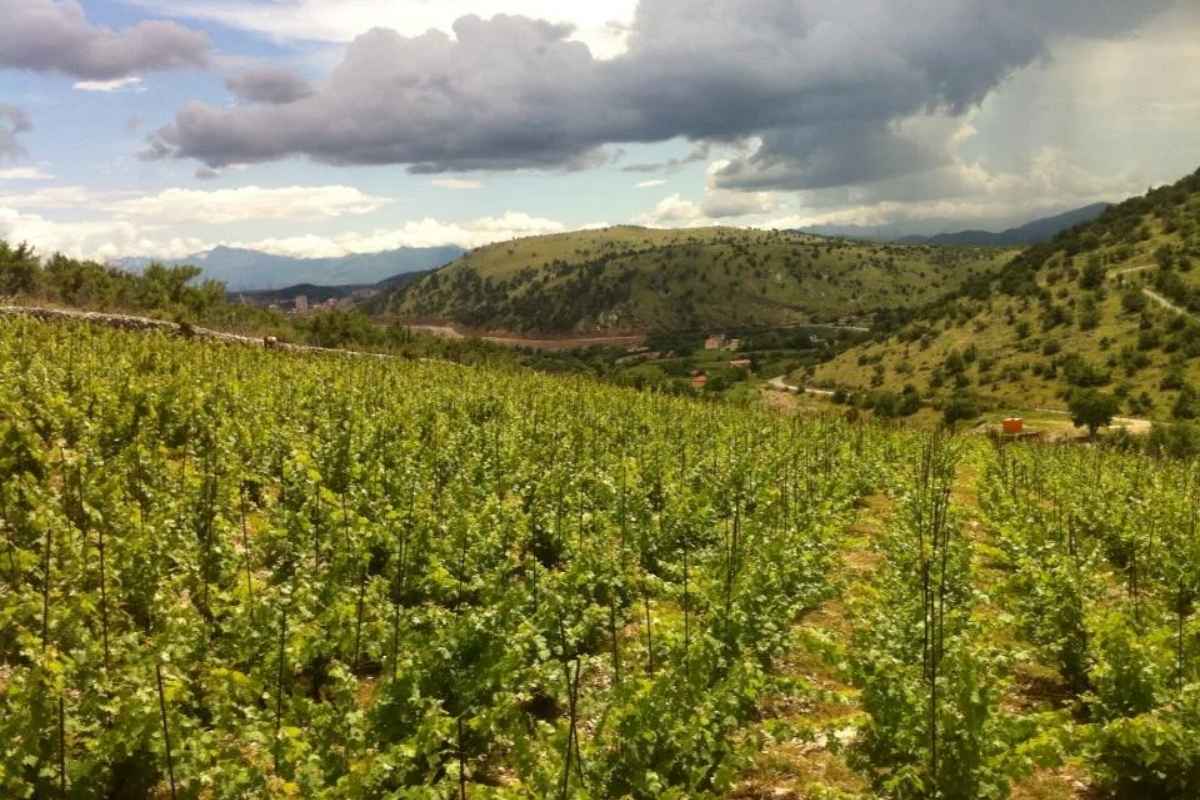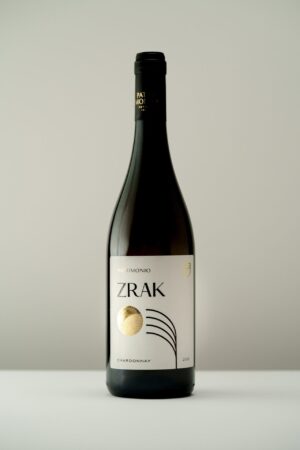Grape varieties grown in Piperi subregion
The Piperi subregion is most strongly associated with Montenegro’s iconic Vranac and Kratošija grape varieties.
- Vranac thrives in Piperi’s soils, producing deep-colored, bold reds with robust tannins and flavors of dark fruit, herbs, and earthiness. Here, Vranac tends to develop a more rustic and powerful character compared to neighboring subregions.
- Kratošija, an ancient Balkan variety linked genetically to Zinfandel/Primitivo, is less common but historically important. It contributes freshness, red-fruit aromas, and lighter body, making it an ideal blending partner for Vranac.
Among the international grapes, Chardonnay is the most widespread in Piperi. Thanks to the subregion’s climate, Chardonnay wines here often exhibit a balanced acidity and aromatic finesse, with notes of citrus, apple, and subtle minerality. Other international varieties are occasionally planted, but in much smaller proportions.
Terroir and climate of Piperi wine subregion
Piperi is defined by its hilly and karstic landscape, where soils are typically shallow, stony, and rich in limestone. These conditions reduce yields but concentrate grape quality, producing wines with structure and personality.
The climate combines Mediterranean influences from the Skadar Lake Basin with cooler upland breezes, creating favourable diurnal temperature variations. Hot, sunny days allow for full ripening of red varieties like Vranac, while cool nights preserve acidity, making the subregion suitable not only for powerful reds but also for crisp whites.
History and cultural significance of the Piperi subregion
Piperi is also the name of one of Montenegro’s historic tribes (plemena), known for their resilience and strong ties to the land. Viticulture in this area has traditionally been linked to family heritage, with vineyards passed down through generations.
Wines produced here were historically made in stone cellars for household use and local celebrations, a tradition that still survives today among many small-scale producers. This cultural identity gives Piperi wines a deeper meaning: they are not just beverages, but also a symbol of continuity, tradition, and belonging.
Potential and modern outlook of Piperi subregion
Although the Piperi subregion remains small in vineyard area, its potential lies in the production of authentic, terroir-driven wines. With rising interest in boutique and artisanal wines, Piperi could attract wine lovers seeking limited-production labels that embody Montenegrin tradition.
For professionals, the subregion offers a unique viticultural profile worth exploring — particularly for studying the adaptation of Vranac and Kratošija in marginal, rugged terroirs. For casual wine enthusiasts, it presents the opportunity to taste wines that are as much about heritage and culture as about flavour.
6 wineries in the Piperi sine subregion



